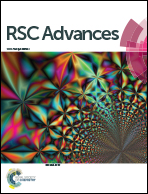Compatibility and thermal decomposition mechanism of nitrocellulose/Cr2O3 nanoparticles studied using DSC and TG-FTIR
Abstract
Nano metal oxides are common combustion catalysts for enhancing the burning rate of solid propellants. Cr2O3 nanoparticles (NPs) are efficient combustion catalysts for the pyrolysis of energetic components. In this study, Cr2O3 NPs were synthesized via a modified sol–gel method and further used for studying the thermal decomposition of nitrocellulose (NC). Differential scanning calorimetry (DSC) and thermogravimetry-Fourier-transform infrared spectroscopy (TG-FTIR) analyses indicate that the Cr2O3 NPs can be safely used with NC and the mechanism of the reaction between Cr2O3/NC and pure NC follows the Avrami–Erofeev equation: f(α) = 3(1 − α)[−ln(1 − α)]1/3/2. The peak temperature and activation energy (Ea) for the thermal decomposition of Cr2O3/NC are lower than those of pure NC. NO2 was detected at a lower temperature after NC was mixed with Cr2O3 NPs; this indicated the catalytically accelerated bond cleavage of NC by Cr2O3 NPs.



 Please wait while we load your content...
Please wait while we load your content...